What else have the members of the Department of Astronomy & Planetary Science been doing?
Our faculty, staff, and students are making a difference on campus and around the world. Read about some of our achievements, activities, and successes.
Thanks to David Trilling for keeping track of all these accomplishments!
March 2024
Congratulations to those who presented at the Lunar and Planetary Science Conference Accordion Closed
Undergraduate students Greta Freeman, Emily Clark. PhD students Anna Baker, Nicole Ozdowski, Laura Lee, Natalie Jones, Ian Marrs, Ana Morgan. Postdocs Cheng Ye, Chris Wolfe.
We also note a first-author presentation by Jessica Walsh. We miss her.
Recent PhD, Colin Chandler is lead author on a number of Citizen Science papers Accordion Closed
The Active Asteroids Citizen Science Program: Overview and First Results
Co-authors include Chad Trujillo, Will Oldroyd, Jay Kueny, Will Burris, Jarod DeSpain, Kennedy Farrell, David Trilling, and Annika Gustafsson.
This was also picked up by the Arizona Daily Sun
Other papers recently published by this group using citizen science:
AI-enhanced Citizen Science Discovery of an Active Asteroid: (410590) 2008 GB140
2016 UU121: An Active Asteroid Discovery via AI-enhanced Citizen Science
Cometary Activity Discovered on Vacationing Centaur 2019 OE31
New Active Jupiter Family Comet 2008 QZ44: a Discovery with Citizen Science
Mars-Crossing Minor Planet 2018 VL10: a Jupiter-family Comet Discovery via Citizen Science
Activity Discovered on Mars-Crossing Jupiter Family Comet 2018 OR by Citizen Scientists
This one is Kennedy’s first 1st-author paper!
Mark Loeffler awarded at NASA Solar System Workings Accordion Closed
The awarded proposal is titled: The Stability of Organosulfur and Organic Compounds in Solar System Ices.
The projects investigates how stable amino acids and astrophysically-relevant organosulfur compounds may be in icy environments found on extraterrestrial surfaces. The results will have implication for what compounds scientists may be likely to find when observing surfaces of icy moons that have been chemically altered over time. The award is for $458K over 3 years.
Connor Auge (BS 2017) successfully defended his PhD in astronomy at the University of Hawai`i Accordion Closed
You can watch his defense here: https://youtube.com/watch?v=5IW5fomCoLA.
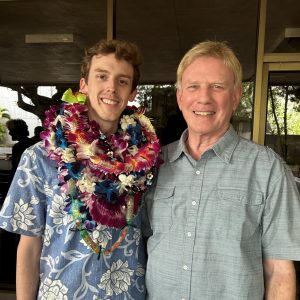
Connor is now starting a postdoc position working on the Burst-alert-telescope AGN Spectroscopic Survey.
Thanks to Lisa Chien for providing this update.
Samuel Navarro-Meza publishes a paper Accordion Closed
Taxonomy of Subkilometer Near-Earth Objects from Multiwavelength Photometry with RATIR
Samuel completed his PhD at UNAM (Mexico) a few years ago. Most of his PhD work was carried out while a long-term visitor here at NAU.
Great to see this paper finally get published! Other NAU authors include David Trilling and Michael Mommert (now faculty at the Stuttgart University of Applied Sciences in Germany).
Mark Salvatore has now been running the *world’s first Meteor Crater class in the Spring 2024 semester Accordion Closed
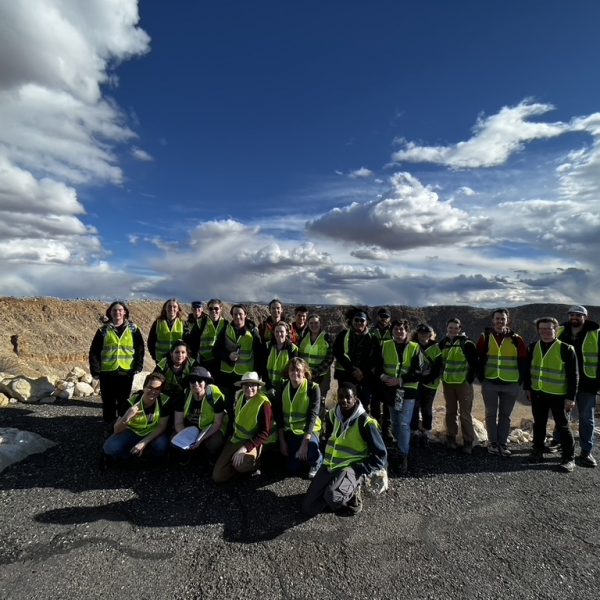
NAU is the only university in the world that can offer this class! They take an NAU bus to Meteor Crater every Friday afternoon for a few hours at the world’s best preserved impact crater, and the topic of the class is impact cratering.
Mark hosted and participated in a recent meeting for his NSF LTER (long-term ecological research) project Accordion Closed
“This is the annual Winter PI meeting where the leaders debrief from the past field season and strategize for the upcoming season.”
Remember that Mark is part of the Antarctic/McMurdo LTER team.
Postdoc Will Oldroyd recently accepted a fellowship position at Katalyst Space Technologies a space startup based here in Flagstaff Accordion Closed
He starts in June and will be working on software for upgrading satellites.
Recent PhD graduate Oriel Humes has a new paper out Accordion Closed
The Distribution of Highly Red-sloped Asteroids in the Middle and Outer Main Belt
Co-authors are professor Cristina Thomas and postdoc Lauren McGraw.
JF Smekens is a co-author in a recently published paper Accordion Closed
The paper discusses emissions during the first Icelandic eruption on the Reykjanes peninsula in 2021, in which they look into Sulfur budgets between gas and ground mass, and how observed emissions are integrated within gas dispersion models in real time.
CONGRATULATIONS to Christopher Edwards and Mark Loeffler, who both earlier this week received notice of their promotions to full professor, effective for the 24/25 academic year Accordion Closed
Both Christopher and Mark are incredible mentors, researchers, teachers, and colleagues. Their contributions to our department, and to the success of our students, are enormous, and we are very fortunate to have them as colleagues and members of our department.
February 2024
NAU’s NSF-supported REU (Research Experiences for Undergraduates) program was renewed for another three year period. Accordion Closed
The PI of this program is David Trilling — it was run for many years by emerita faculty Kathy Eastwood. 2024 will be the 34th year of our REU program, and it is the longest continually operating REU site in astronomy in the country. In fact, we’re pretty sure this program was selected in the first-ever REU cohort in astronomy, and has been operating here ever since. Congratulations to everyone involved in the success of this proposal and the success of this program over many, many years.
PhD student Andy Lopez Oquendo has accepted a postdoc position at NASA Goddard, in Maryland, to start in the fall. Accordion Closed
This position is part of the NASA Postdoctoral Program, and Andy is one of only six people selected in this round.
At Goddard he’ll join other recent NAU PhD graduates who are now postdocs there: Ari Koeppel, Amber Young, and Patrick Tribbett. It’s a party of successful great young NAU-trained scientists!
Nathan J. Tohtsoni, Education Coordinator from Navajo Transitional Energy Company, LLC has gifted the NAU/NASA Space Grant AIMER Program $5K Accordion Closed
Mary Lara (NAU AIMER Coordinator) met Nathan Tohtsoni, the Education Coordinator for Navajo Transitional Energy Company, two years ago at a Girl Scout Camp at Dine College in Tsaile. This past fall, he offered Mary $5,000 in grant money to the AIMER Program to purchase Alpha rockets to use with Shonto Prep, Ganado Middle School and the Girl Scouts. He also requested that she use some of the grant money to purchase space t-shirts for the Girl Scouts.
Selections for Cycle 3 of the James Webb Space Telescope were announced Accordion Closed
Wow, 10:1 oversubscription is a really tough game, making our successes even more impressive!
Congratulations to Cristina Thomas and Josh Emery, who are co-investigators on 1 and 3, respectively, selected proposals!
Also, PhD student, Lucas McClure (CoI, 1 proposal) and adjunct faculty, Will Grundy (CoI, 1 proposal) on the acceptance list.
Also on the list of accepted programs two alumni from our department: former undergrad Brittany Harvison (CoI, 1 proposal) and MS alumna Ryleigh Davis (PI 1 proposal, CoI 1 proposal).
Ed Anderson has been named a finalist for a STEMMY! Accordion Closed
What’s a STEMMY? These are Flagstaff-area STEM awards. Ed is a finalist for the Community Partner of the Year category, and we’ll find out Thursday, March 7, whether he wins!
January 2024
Undergrad, Jarod DeSpain, is lead author on a new paper in RNAAS Accordion Closed
Citizen Science Discovery of a Recurrently Active Jupiter-Family Comet: (551023) 2012 UQ192
Co-authors include faculty supervisor, Chad Trujillo; recent PhD’s Colin Chandler and Will Oldroyd; current grad-students Will Burris and Kennedy Farrell; and alumnus (class of 2019), Jay Kueny.
The same team also published a paper at the end of last year as well:
New Active Quasi-Hilda Asteroid 2004 CV50: A Citizen Science Discovery
The DECam Ecliptic Exploration Project (DEEP) announced the discovery of more than 100 trans-Neptunian objects Accordion Closed
Thes are faint objects in the distant outer Solar System.
The team led by David Trilling and including Chad Trujillo, Will Oldroyd, Ryder Strauss, and Colin Chandler.
This is the first batch of discoveries from DEEP. Over the next year or so they will announce thousands of such objects, making their survey the largest to date.
NAU’s student-built VISIONS camera — the VISible and Infrared ObservatioN System — was delivered to RocketLab Accordion Closed
by PhD student Laura Lee and research faculty Chris Haberle.
VISIONS will be installed on NASA’s EscaPADE mission, to be launched for Mars in August, 2024. This successfully concludes the hardware construction and delivery phase of the project. The next phases are integration, and eventually in-flight operations
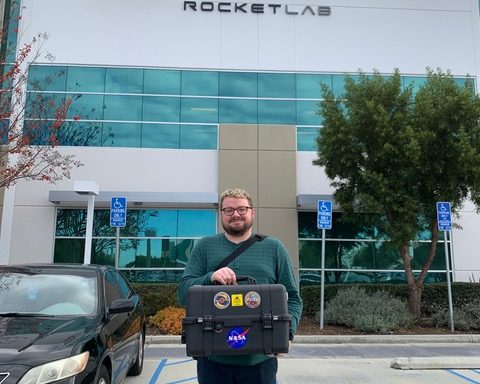
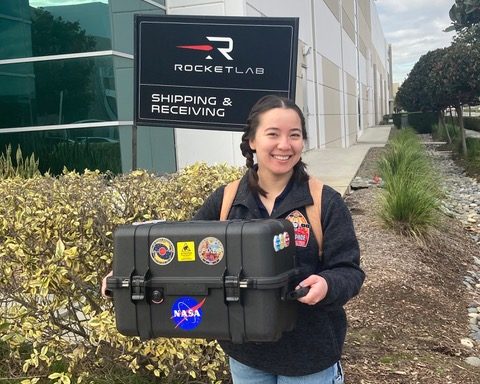
Congratulations to all involved!
New faculty member Diego Munoz continues to lead the charge on astrophysics research at NAU Accordion Closed
He is PI on a recently accepted proposal in NASA’s ATP program (Astrophysics Theory) for the project entitled Accreting Massive Black Hole Binaries in Galactic Nuclear Clusters.
This is a 3 year program that will support an NAU grad student and an undergrad for three years. The total award is $383,012.
Recent PhD awardee Oriel Humes reports from her postdoc position at TU Braunschweig IGEP Accordion Closed
“I’ve been in Braunschweig [Germany] at my new postdoc position for a month now! Now that I’ve settled in I wanted to send you this update including a picture of me with my name on the TU Braunschweig IGEP (Institute for Geo- and Extraterrestrial Physics) directory to be included in the next good news email. I also gave a seminar this week at the IGEP about my PhD research to introduce myself to the department.”
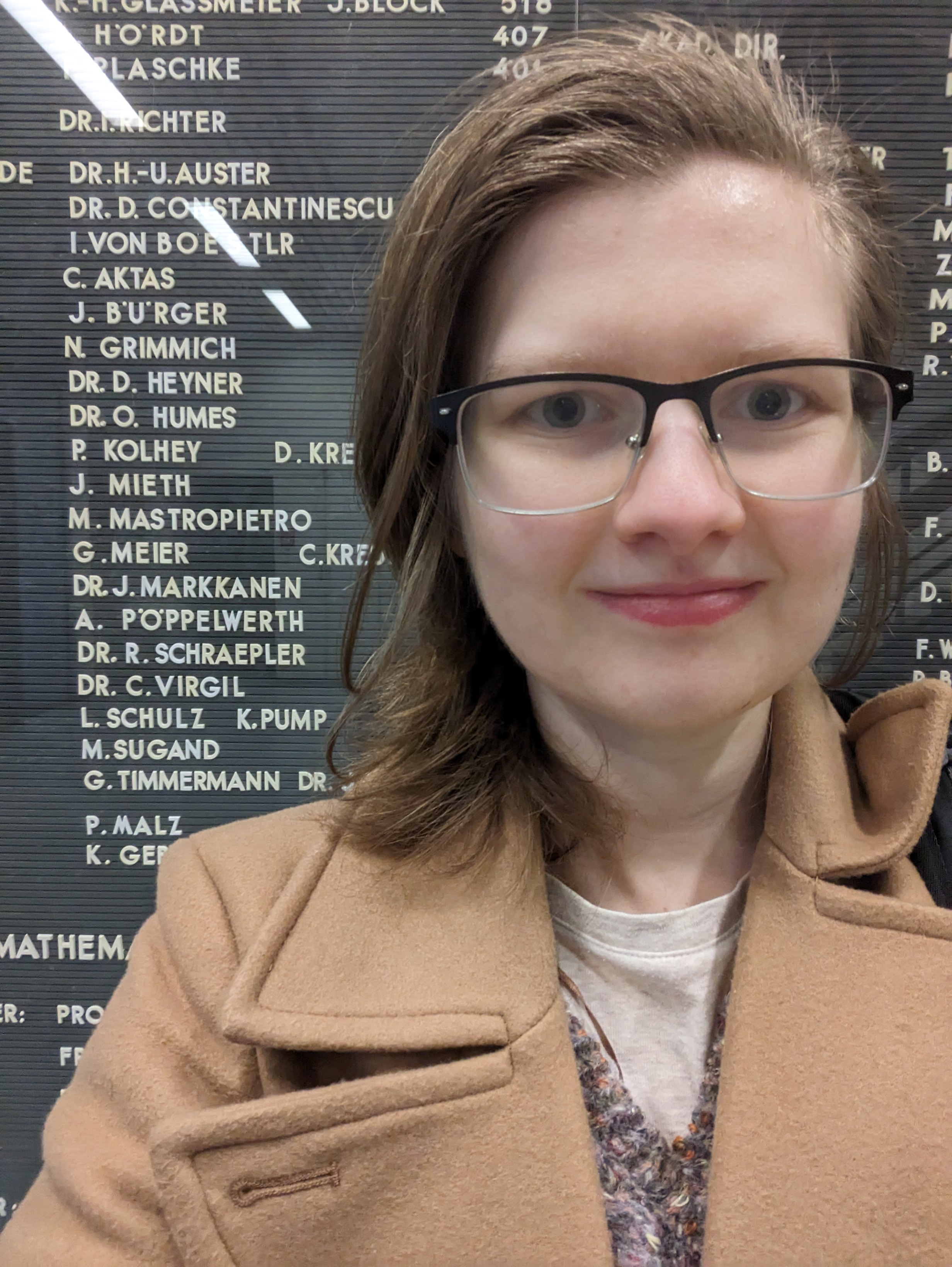
APS undergraduate Lleyton Hull (under the supervision of Mark Salvatore) led a review session on Unmanned Aerial Vehicles (UAVs) and the FAA’s Part 107 licensing examination for civil UAV piloting Accordion Closed
The voluntary review session was attended by ten participants (including two from NAU Marketing and two from NAU ITS Enterprise Information Services), seven of whom made the trip to Embry-Riddle Aeronautical University the following Friday to take the exam and become certified pilots.
We are happy to report that all participants who took the exam passed and are now licensed drone pilots!
In the president’s welcome back video you might spot professors Edwards and Loeffler and former students Aaron Weintraub and Beau Prince Accordion Closed
President Cruz-Rivera’s Welcome Back message.
Looking good, folks!
Undergrads Hunter Brooks and Jack Kohm presented at the recent American Astronomical Society national meeting in New Orleans. Accordion Closed
Congratulations to both!
Space Grant program coordinator Paloma Davidson reports Accordion Closed
“Right now until the end of March, there’s a small group of students who are astronomy majors, and minors participating in the Plant Mars Challenge. The group leaders are PhD student Laura Lee and recent BS graduate and current MS student Loren Larrieu. I’m excited that NASA Space Grant could fund this and I really hope this project is a success and a great learning experience.”
Former NAU postdoc and research faculty Michael Mommert published a very useful book! Accordion Closed
Michael has had a couple of positions since leaving NAU, and next month will become professor of AI and remote sensing at Stuttgart University of Applied Sciences (Germany).
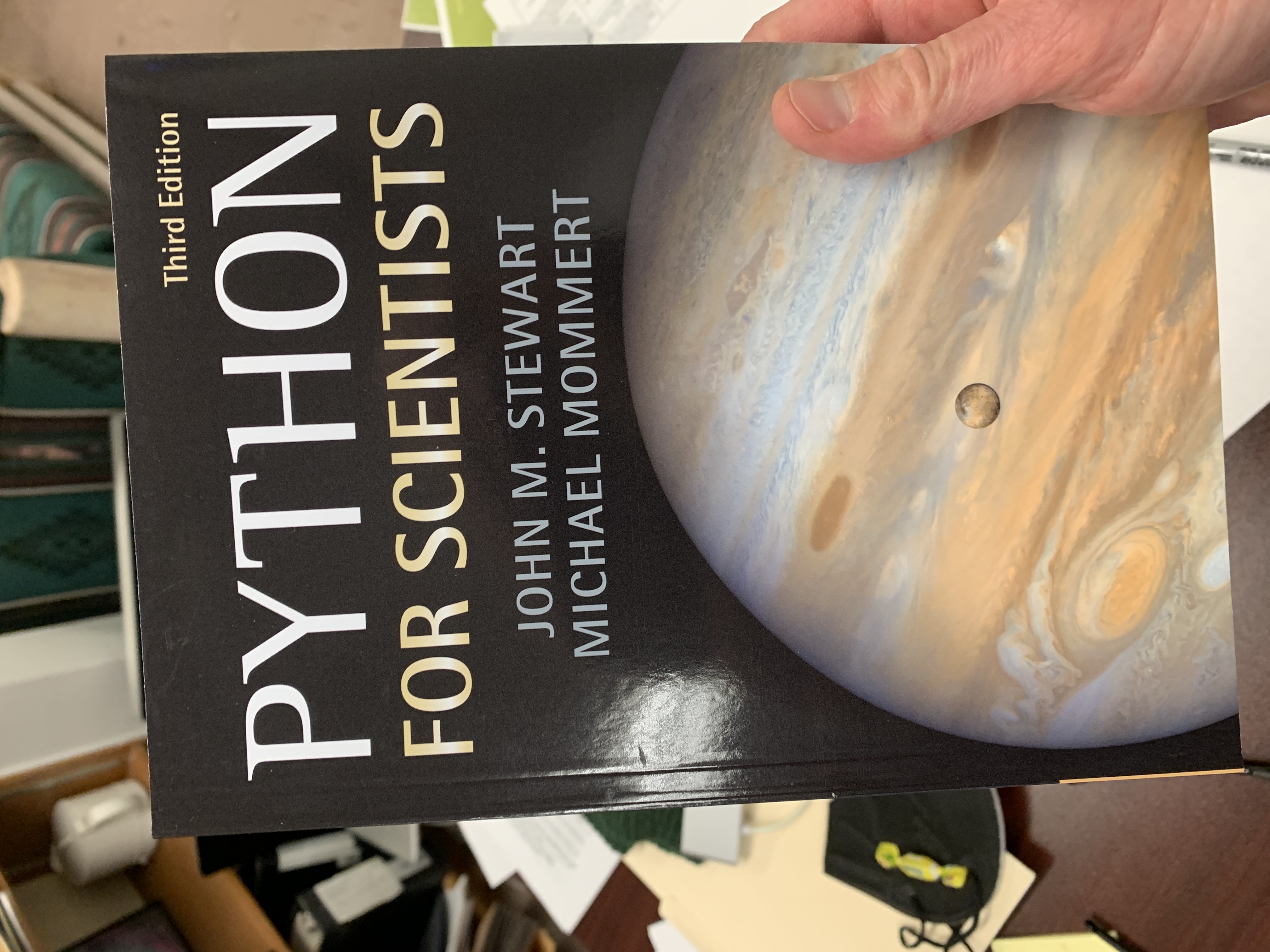
Congratulations, Michael!!
Recent PhD graduate Amber Young (now at NASA Goddard in Maryland) has a new paper out Accordion Closed
Retrievals Applied to a Decision Tree Framework Can Characterize Earthlike Exoplanet Analogs
Former faculty, Ty Robinson is one of the co-authors.
PhD student James Windsor is 1st author on a new paper Accordion Closed
Inner Edge Habitable Zone Limits Around Main Sequence Stars: Cloudy Estimates
Recent PhD graduate, Amber Young; and former faculty, Ty Robinson are among the co-authors.
PhD Student Laura Lee gave a remote presentation to Freedom 7 Elementary school in Florida Accordion Closed
Brian Abramowitz from the Florida Museum of Natural History has an initiative to bring scientists to Florida schools and reached out to Laura looking for an astronomy expert to talk to Freedom 7 Elementary school.
She remotely presented to 60 some odd students about differentiating bodies in the Solar System.
Here’s the link to her slides: https://www.canva.com/design/DAF6k8Y1l2Q/PVIuzzDuO_7iUHVXrLq7EQ/edit
In 2023 we spent about $4.5M on research projects (not including state support like faculty and staff salaries) Accordion Closed
That’s a great number — congratulations!
New Research Faculty Jean-François Smekens will participate in 2 projects recently selected by NASA Accordion Closed
He was a named postdoc on both projects, contributed to the proposal writing, and is now an active investigator with substantial funding for 3 years. Both projects will explore the application of multi-spectral infrared imaging for the monitoring of natural hazards.
The first project, entitled “UAS Thermal Infrared Spectroscopy will Improve Real Time Evaluation of Hazards and Environmental Impacts of Wildfires”, was submitted to the FireSense Technology program, which is a technology development program managed by the Earth Science Technology Office (ESTO) seeking new, innovative Earth system observation capabilities to predict and manage wildfires and their impacts. Using drone-mounted IR multi-spectral imaging, the team will develop new tools to measure thermal flux, monitor burn area and quantify gas and ash emissions.
The second project, entitled “Validating volcanic degassing retrievals using a novel ground-based thermal infrared camera system: Preparing for the upcoming SBG mission”, was submitted to the ESI program (Earth Surface and Interior). This project will use ground-based multi-spectral IR to monitor changes in the thermal flux and gas outputs at 3 persistently active volcanic systems in Italy, with the specific goal of developing level 4 products for the upcoming SBG mission.
J-F’s role in both projects will be to develop retrieval codes for gas and particle emissions from the camera data.
PhD student Ryder Strauss has a new paper out Accordion Closed
Exoplanet Analog Observations of Earth from Galileo Disk-integrated Photometry
Co-authors include faculty, David Trilling; former faculty, Ty Robinson; and former undergrads, Ryan Cummings and Christopher Smith.